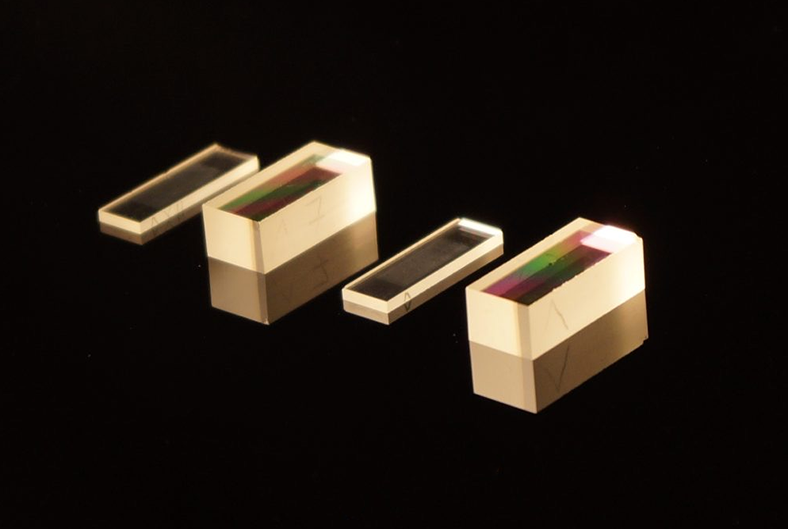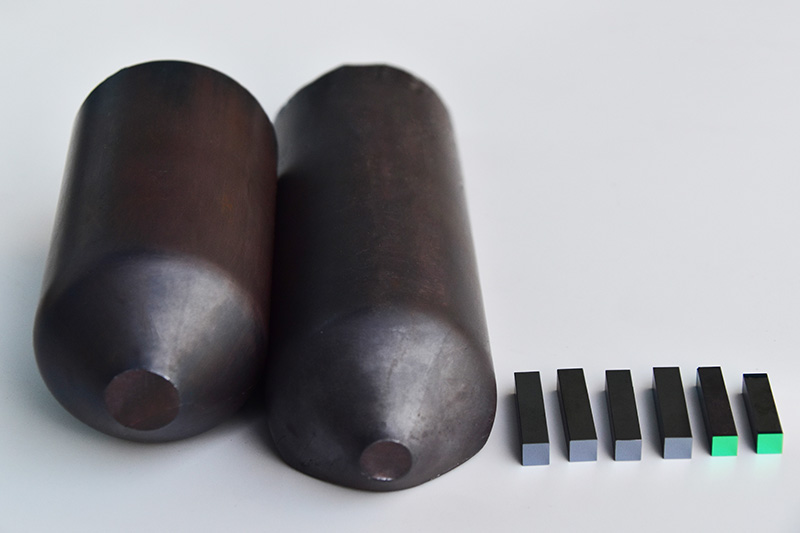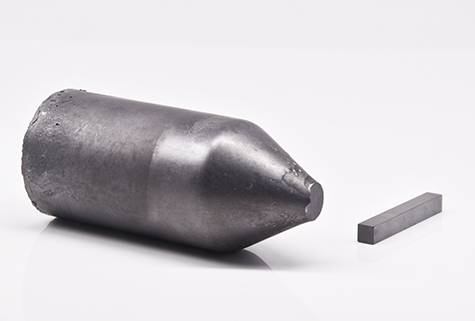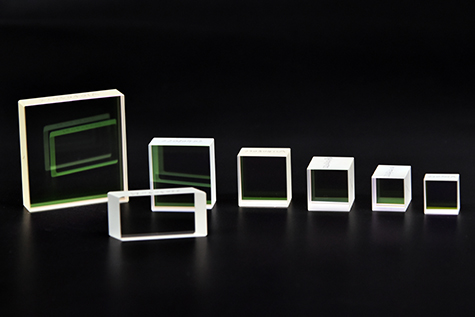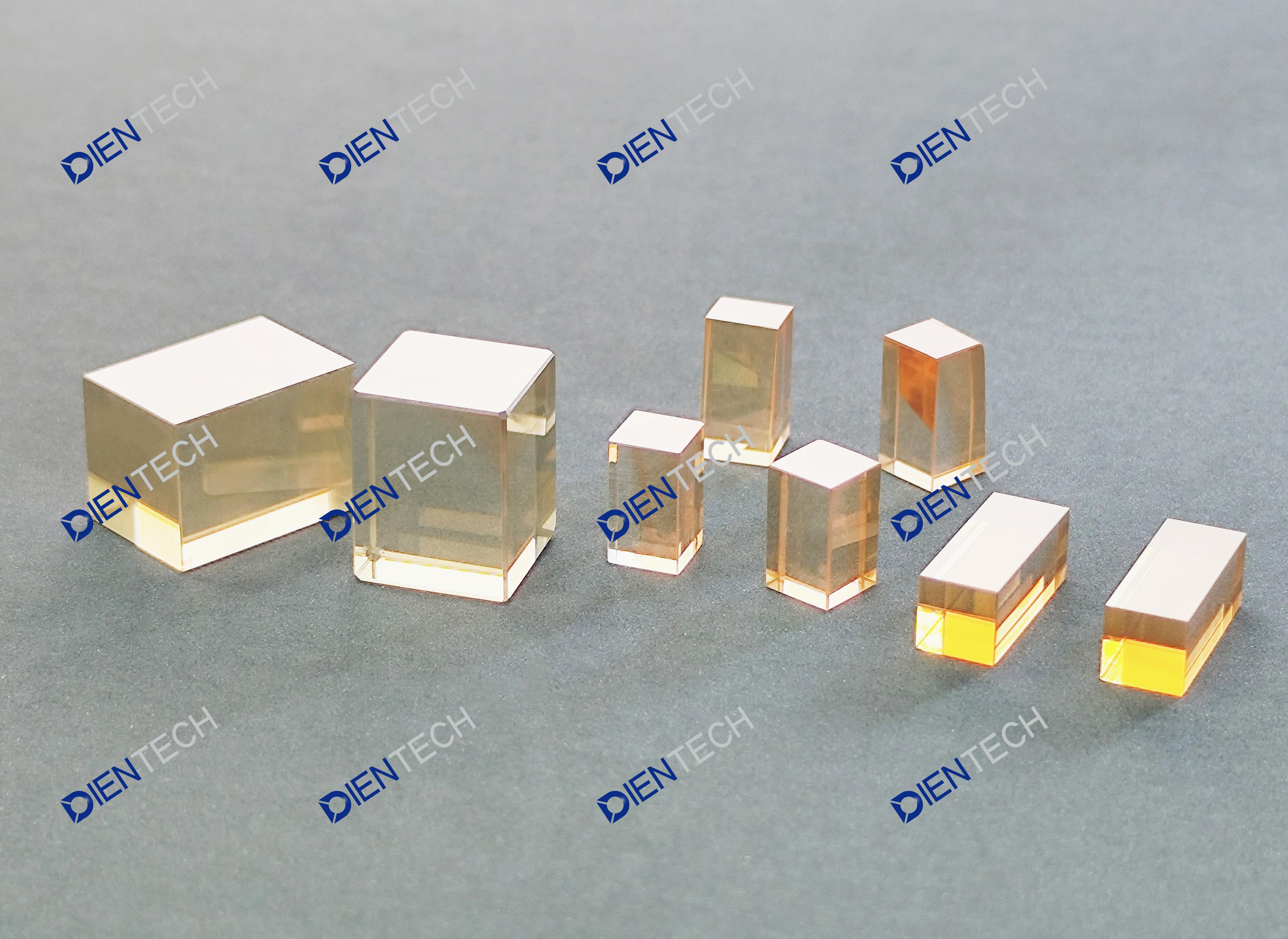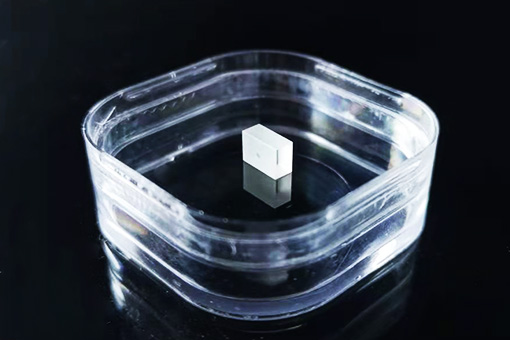PPKTP Cystals
Features:
- Customizable frequency conversion within a large transparency window (0.4 – 3 µm)
- High optical damage threshold for durability and reliability
- Large nonlinearity (d33=16.9 pm/V)
- Crystal lengths up to 30 mm
- Large apertures available upon request (up to 4 x 4 mm2)
- Optional HR and AR coatings for improved performance and efficiency
- Aperiodic poling available for high spectral purity SPDC
Advantages of PPKTP
High efficiency: periodic poling can achieve higher conversion efficiency due to the ability to access the highest nonlinear coefficient and the absence of spatial walk-off.
Wavelength versatility: with PPKTP it is possible to achieve phase-matching in the entire transparency region of the crystal.
Customizability: PPKTP can be engineered to meet the applications’ specific needs. This allows control over bandwidth, temperature setpoint, and output polarizations. Moreover, it enables nonlinear interactions involving counterpropagating waves.
Typical Processes
Spontaneous parametric downconversion (SPDC) is the workhorse of quantum optics, generating an entangled photon pair (ω1 + ω2) from a single input photon (ω3 → ω1 + ω2). Other applications include squeezed states generation, quantum key distribution and ghost imaging.
Second harmonic generation (SHG) doubles the frequency of input light (ω1 + ω1 → ω2) often used to generate green light from well-established lasers around 1 μm.
Sum frequency generation (SFG) generates light with the sum frequency of the input light fields (ω1 + ω2 → ω3). Applications include upconversion detection, spectroscopy, biomedical imaging and sensing, etc.
Difference frequency generation (DFG) generates light with a frequency corresponding to the difference in frequency of the input light fields (ω1 – ω2 → ω3), providing a versatile tool for a wide range of applications, such as optical parametric oscillators (OPO) and optical parametric amplifiers (OPA). These are commonly used in spectroscopy, sensing and communications.
The backward wave optical parametric oscillator (BWOPO), achieves high efficiency by splitting the pump photon into forward and backward propagating photons (ωP → ωF + ωB), which allows for internally distributed feedback in a counterpropagating geometry. This allows for robust and compact DFG designs with high conversion efficiencies.
Ordering information
Provide the following information for a quote:
- Desired process: input wavelength(s) and output wavelength(s)
- Input and output polarizations
- Crystal length (X: up to 30 mm)
- Optical aperture (W x Z: up to 4 x 4 mm2)
- AR/HR-coatings
| Min | Max | |
| Involvedwavelength | 390 nm | 3400 nm |
| Period | 400 nm | - |
| Thickness (z) | 1 mm | 4 mm |
| Grating width (w) | 1 mm | 4 mm |
| Crystal width (y) | 1 mm | 7 mm |
| Crystal length (x) | 1 mm | 30 mm |
Products categories
-

Phone
Phone
-

Email
Email
-

whatsapp
whatsapp
-

Wechat
Wechat

-

Top

